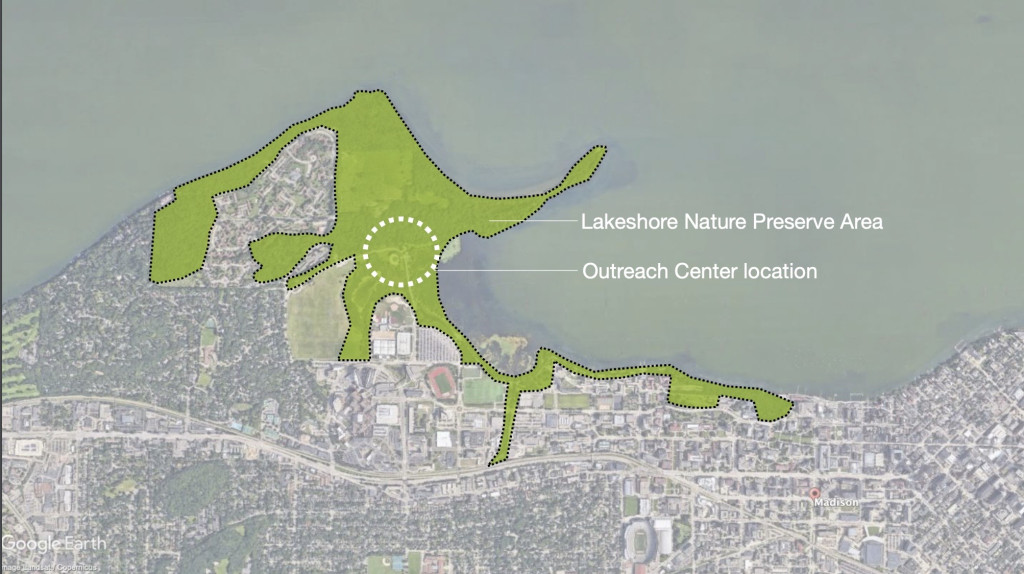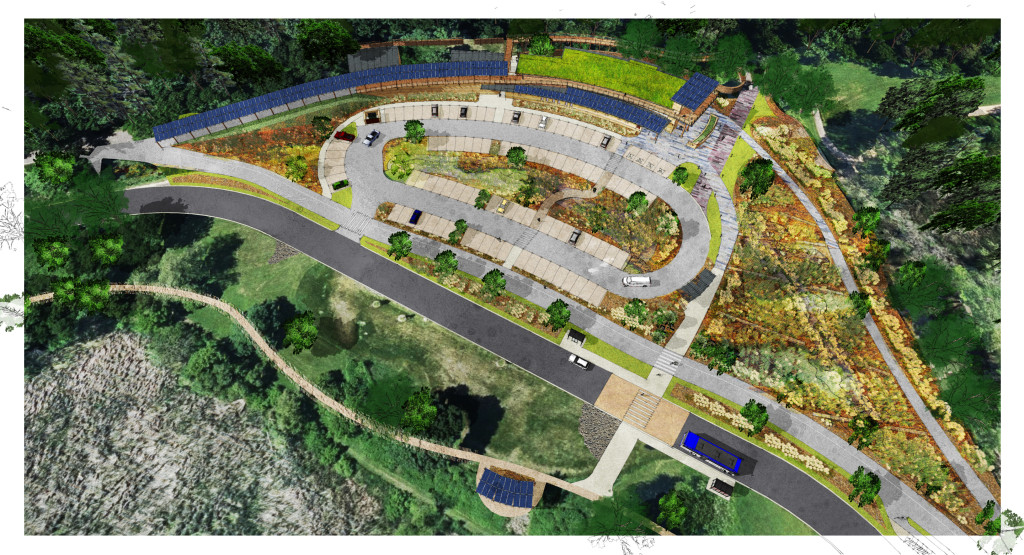New sustainable visitor and education center to transform Picnic Point, Lakeshore Nature Preserve
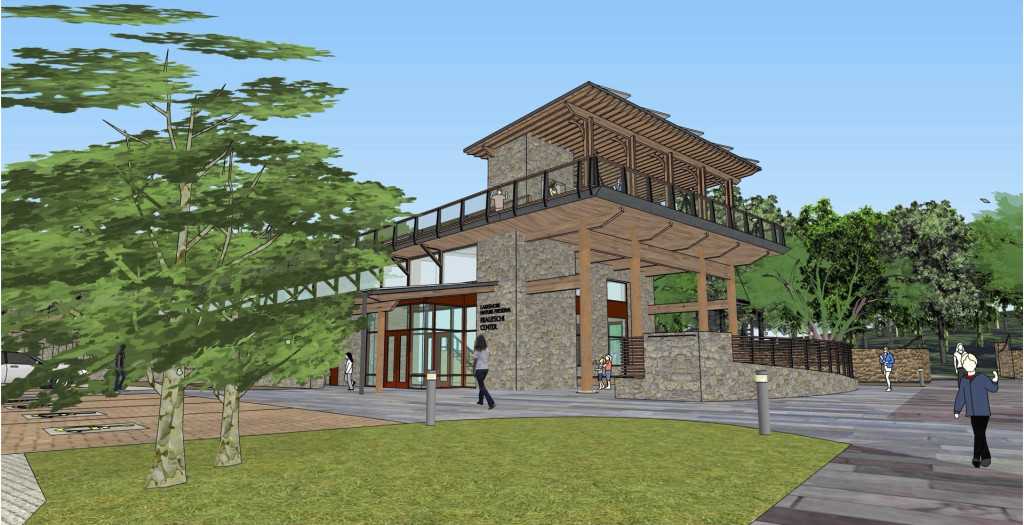
With a generous gift from Jerry Frautschi, a new visitor and education center will create increased access for all visitors to the Lakeshore Nature Preserve, provide safer pedestrian crossing and entry to the parking area off University Bay Drive and serve as the new “front door” for visitors to begin their journey. The center will showcase UW–Madison’s commitment to sustainability and support hands-on experiential learning and research for more than 25 academic programs, in addition to serving as a new asset to environmental education for the community.
The Lakeshore Nature Preserve has long held a special place in the hearts of Madison philanthropist Jerry Frautschi and his family. Now, with a $14.3 million gift, Frautschi, an alumnus of the University of Wisconsin–Madison, will help build a world-class visitor and education center at this iconic and cherished UW–Madison landmark. The Lakeshore Nature Preserve Frautschi Center will showcase UW–Madison’s commitment to sustainability and support hands-on experiential learning and research for more than 25 academic programs, in addition to serving as a new asset to environmental education for the community.
“My family has lived in Madison since the 1800s, and we feel a great sense of responsibility to give back to the city and community that we love,” Frautschi says. “I am pleased that I am able to carry on my family’s tradition of philanthropy and community service and that visitors will have a welcoming gathering place with improved access to the trails that line the lakeshore.”
The visitor and education center will physically transform the preserve, a 300-acre natural area situated on the south shore of Lake Mendota that includes 4.3 miles of shoreline. It will create increased access for all visitors, provide safer pedestrian crossing and entry to the parking area off University Bay Drive and serve as the new “front door” for visitors to begin their journey.
The building is planned for the area outside the stone wall at the Picnic Point entrance on previously disturbed land. This location is in an area that does not disrupt habitat within the preserve and is designed to increase natural habitat and stormwater filtration.
“We are fortunate to have such beautiful natural spaces on campus for recreation, research and education,” says UW–Madison Chancellor Jennifer L. Mnookin, who recently announced new and ambitious sustainability goals for UW–Madison. “And we are exceptionally fortunate for Jerry and his family’s generosity and their commitment to creating this welcoming, accessible and sustainable space for our students, employees and visitors.”
The new building will provide an accessible upper-level deck to allow views into the preserve to the north, across University Bay to the southeast and toward the Class of 1918 Marsh to the south. While the entrance will be reconfigured to improve safety and visitor experience, the beloved routes through the preserve will remain. A B-Cycle station will also be located where a new pedestrian path leads into the preserve from the main bike and pedestrian route.
In addition, the 9,000-square-foot center will provide a single location for preserve staff to work, and it will house tools and land restoration equipment. Currently, resources are scattered across campus in six different locations.
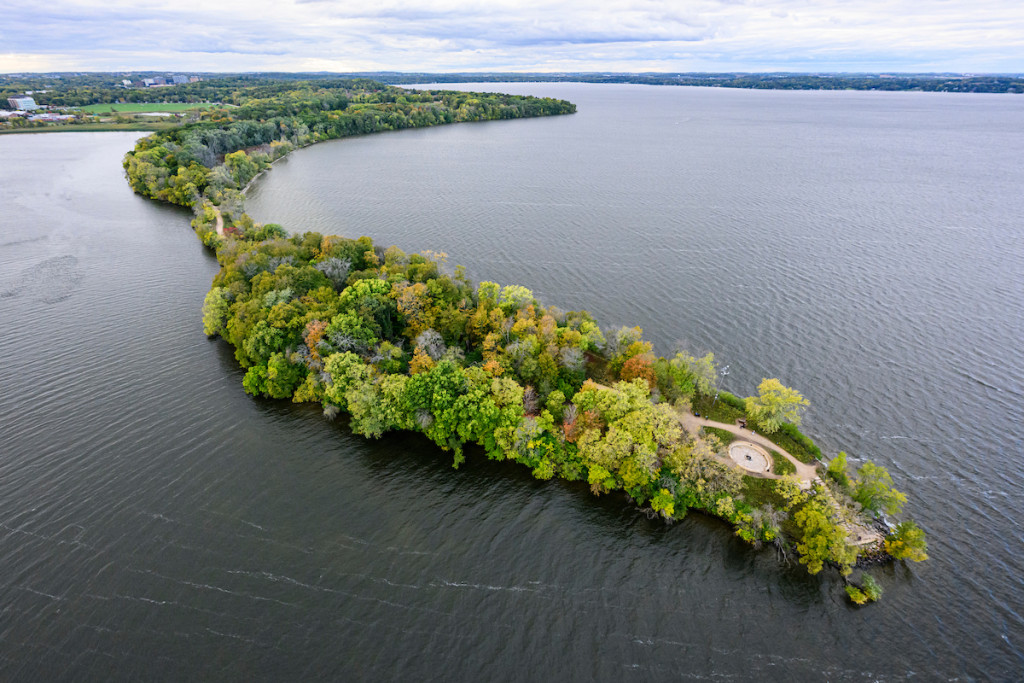
The Lakeshore Nature Preserve at UW–Madison encompasses 300 acres of woods, prairie and shoreline, including Picnic Point, pictured here. Photo: Jeff Miller
The Frautschi Center is intended to be certified as the state’s first Living Building and will also be the first net-positive energy building on UW’s campus, meaning it will produce more energy than it consumes.
The building will incorporate recycled and upcycled building materials, stormwater reuse best management practices and green roofs to reduce runoff. To reduce electrical needs, the building will also rely on geothermal heating and cooling, passive ventilation and daylighting (relying on windows and skylights to cut down on artificial lighting during the day).
“UW–Madison is a steward of a huge range of land resources, research stations, buildings and properties, but none are so iconic, publicly loved and universally experienced as our lakeshore,” says Paul Robbins, dean of the Nelson Institute for Environmental Studies. “A new center at the Lakeshore Nature Preserve will create unprecedented opportunities for community engagement and public education. This is hugely exciting for everyone.”
The sustainable space is designed to create a public-facing, recognizable sense of place for the community, providing meeting spaces for students, public restrooms, a bottle filling station, and a multi-purpose community room.
The Frautschi family connection to the preserve began 34 years ago when Jerry and his brother, John, purchased what was known as “Second Point” along Lake Mendota’s shoreline. (The university’s iconic Picnic Point is part of the preserve). The property was in danger of being developed at the time, and the family had been committed to preserving natural spaces.
The brothers paid $1.5 million for the land and then gifted the property to their father for Christmas in 1988. The Frautschis renamed the land “Frautschi Point” and donated it to the University of Wisconsin. The gifted land connected the western and eastern ends of UW’s Lake Mendota shoreline, creating what would ultimately become the Lakeshore Nature Preserve.
“The Frautschi Center is an ideal location to showcase what’s possible in sustainable design,” says Missy Nergard, director of sustainability at UW–Madison. “The preserve is this wonderful nexus on campus, where we see dynamic overlaps between different species and ecologies, research and recreation, campus and community. By building for a sustainable future, we are celebrating our shared connection with this special place and helping to fulfill the promise of public higher education.”
The Frautschi Center will also honor the ancestral home of the Ho-Chunk Nation. In collaboration with the Ho-Chunk, the center will share an understanding of how these lands have been inhabited and utilized for over 12,000 years. This includes increasing land care practices that consider culturally significant areas within the preserve, including burial mounds, and offering educational displays featuring culturally significant plants.
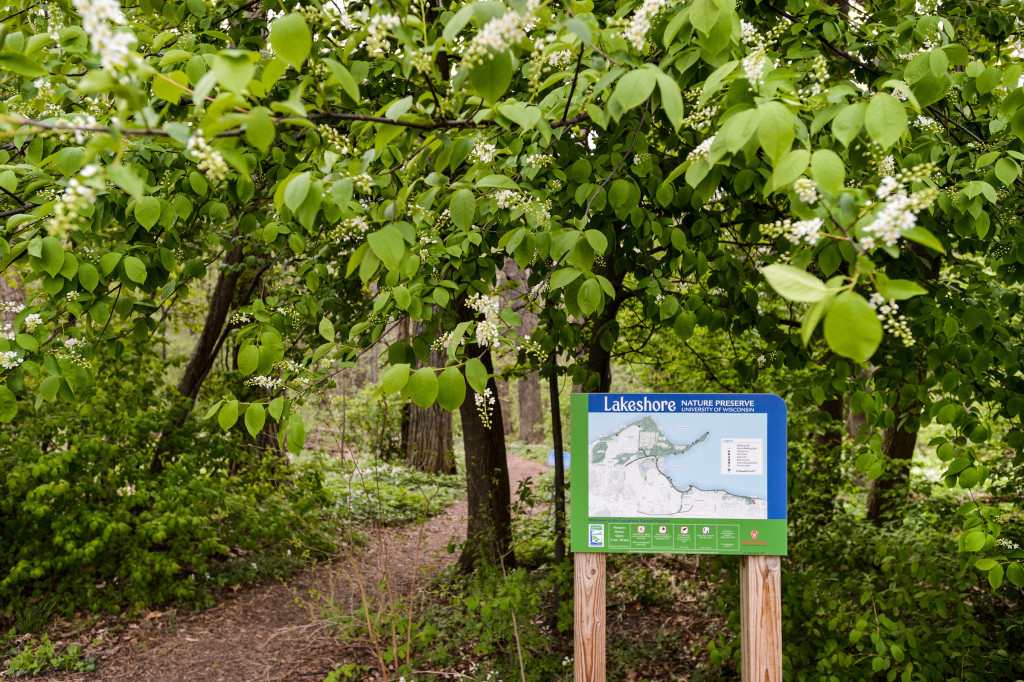
A path leads into Muir Woods in the Lakeshore Nature Preserve. Photo: Jeff Miller
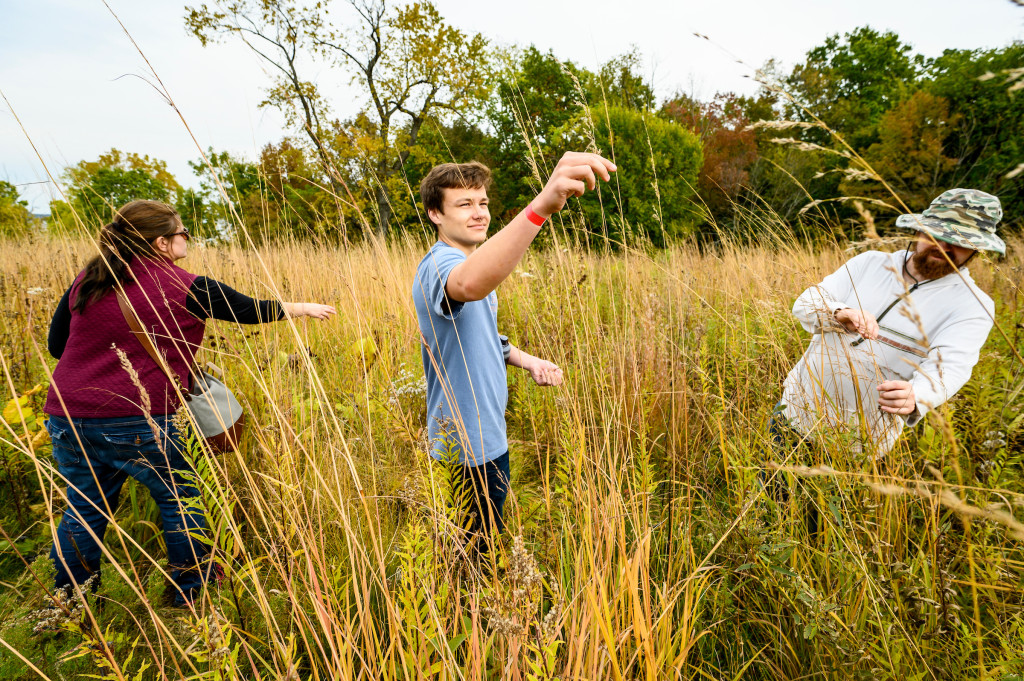
During a family weekend event in 2019, UW student Alex Beers (center) and his mother Lisa (left) and father Robert (right) collect seeds from the native prairie plants at the Biocore Prairie inside the Lakeshore Nature Preserve. Photo: Bryce Richter
The center, says Laura Wyatt, interim director of the Lakeshore Nature Preserve, “will create an interpretive space to share information about the extraordinary work happening in the preserve every day and celebrate the cultural richness of the preserve’s history.”
With funding for the facility in place, the university is also launching an additional $5 million fundraising effort to support ongoing operations and programming at the center. The additional funding will ensure the highly sustainable and resilient building continues to use green energy technology into the future. It will also support programs to engage the community in experiential learning centered on cultural and natural history and expand access to the Lakeshore Nature Preserve.
Construction on the facility is slated to start in 2025, and the center is scheduled to open in 2026.
It will serve as a reflection of one family’s enduring commitment to UW–Madison and the environment.
“I’ve enjoyed Lake Mendota and its beautiful shoreline for most of my life, and it is exciting to think that this visitor and education center will encourage even more visitors to this Madison treasure,” Frautschi says.
Learn more about the campaign by visiting https://lakeshorepreserve.wisc.edu/donate.

